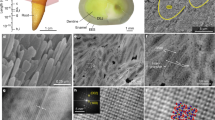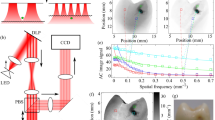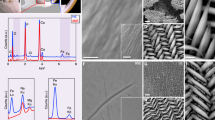Abstract
RECENT investigations with polarizing microscopy have indicated that some of the water of dental enamel is not easily removed by dehydrating methods. Somewhat more severe treatment of enamel is necessary to remove the last portion of water and these more drastic conditions bring about irreversible changes in enamel1. A distinction between firmly and loosely held water would appear to be possible with the aid of wide line nuclear magnetic resonance spectrometry. On the basis of its narrower signal, relatively free water may be distinguished by this technique from water which is bound. It has been possible to demonstrate that the narrow-line signal due to water protons in suspensions of wheat starch became wider as the degree of gelation and amount of fixation of water increased2.
This is a preview of subscription content, access via your institution
Access options
Subscribe to this journal
Receive 51 print issues and online access
$199.00 per year
only $3.90 per issue
Buy this article
- Purchase on SpringerLink
- Instant access to full article PDF
Prices may be subject to local taxes which are calculated during checkout
Similar content being viewed by others
References
Carlström, D., Glas, J. E., and Angmar, B., J. Ultrastruct. Res., 8, 24 (1963).
Collison, R., and McDonald, M. P., Nature, 186, 548 (1960).
Berendsen, H. J. C., thesis. Univ. Groningen (1962).
Author information
Authors and Affiliations
Rights and permissions
About this article
Cite this article
MYERS, H. Trapped Water of Dental Enamel. Nature 206, 713–714 (1965). https://doi.org/10.1038/206713a0
Published:
Issue Date:
DOI: https://doi.org/10.1038/206713a0
Comments
By submitting a comment you agree to abide by our Terms and Community Guidelines. If you find something abusive or that does not comply with our terms or guidelines please flag it as inappropriate.



